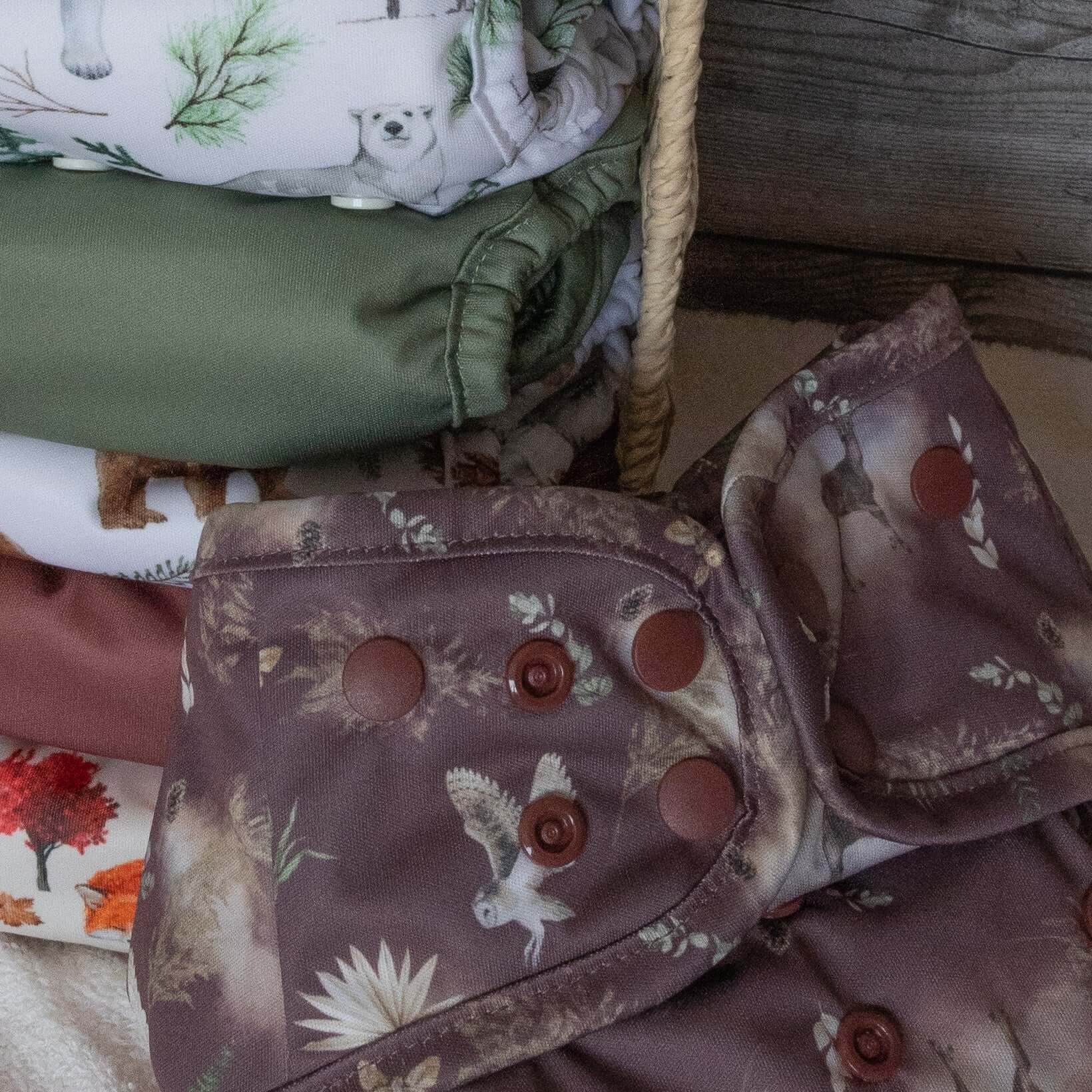
The Cost Comparison: Cloth Diapers vs Disposable Diapers – Which Saves You More?
For parents considering the shift to cloth diapers, one question often looms large: “Will this save me money?” It’s a fair question, and one worth exploring deeply, because diapering is one of the most consistent expenses in early parenthood. While disposable diapers may seem convenient upfront, cloth diapers have the potential to be a game-changer - not just for the environment, but also for your wallet.
We'll break it down, factoring in both initial costs and long-term savings, while also addressing hidden costs and benefits often overlooked. The results may surprise you.
Understanding the Costs of Disposable Diapers
Disposable diapers are a recurring cost that adds up over time. On average, parents can expect to use 2,500 to 3,000 diapers in a baby’s first year alone. With prices ranging from $0.20 to $0.50 per diaper, that translates to approximately $600 to $1,500 annually per child. And that’s just the beginning. Most children remain in diapers for 2-3 years, bringing the total cost to anywhere from $1,800 to $4,500, depending on the brand and frequency of changes.
These costs can increase further when you factor in the price of disposable wipes, diaper pail liners, and occasional purchases of specialty diapers for sensitive skin or overnight use. While disposables may seem affordable in the short term, their cumulative cost over time is significant.
Breaking Down Cloth Diaper Expenses
When considering the switch to cloth, the initial investment for cloth diapers may seem high, but it’s important to view this as a one-time expense rather than an ongoing one. A full stash of cloth diapers, enough to comfortably diaper one child, typically costs between $300 and $800. This range depends on the types of diapers you choose - prefolds, all-in-ones, or pocket diapers - and whether you buy new, second-hand, or through bundles like those offered by Bayrli.
There are additional costs to consider, such as laundry detergent and water usage. On average, laundering cloth diapers adds an extra $10 to $15 to your monthly utility bill, equating to roughly $120 to $180 per year. Even when factoring in these expenses, the total cost of cloth diapering for one child usually stays under $1,000.
What About Subsequent Children?
Now, here’s where the real magic of cloth diapers happens. Unlike disposables, cloth diapers can be reused for multiple children, significantly reducing the cost per child. With proper care, a cloth diaper stash can last through two or even three children, cutting your costs dramatically. For families with two children in diapers, the potential savings should exceed $3,000.
Additionally, once your family no longer needs the diapers, there’s potential to recoup some of your initial investment by reselling them. Many cloth diapering parents sell gently used diapers on second-hand marketplaces, keeping them in circulation and earning back a portion of their cost.
Hidden Savings in Cloth Diapering
Cloth diapers often lead to unexpected savings in areas parents don’t immediately consider. For instance, cloth diapers tend to leak less than disposables when fitted properly, reducing the frequency of outfit changes and the need for extra laundry. Parents who use cloth also report fewer cases of diaper rash, which can mean fewer purchases of creams or ointments.
Furthermore, cloth diapering aligns well with other cost-saving habits, such as using reusable wipes or making your own diapering accessories. These practices further extend your savings while reducing your household’s environmental impact.
But What About Convenience?
Opponents of cloth diapers often cite convenience as a primary reason for sticking with disposables. It’s true that disposables are easier in the moment - they’re readily available, require no maintenance, and are simply tossed away after use. However, modern cloth diapers have come a long way from the bulky, safety-pin models of the past. Brands like Bayrli offer sleek, easy-to-use designs with snap closures, absorbent layers, and waterproof outers.
For busy families, cloth diapering may require a small adjustment period. But with the right routine in place, many parents find the additional effort manageable, especially when weighed against the financial and environmental benefits.
Making the Right Choice for Your Family
The choice between cloth and disposable diapers ultimately comes down to what works best for your family. While disposables offer short-term ease, the long-term financial and environmental costs are worth considering. Cloth diapers, on the other hand, require an upfront investment and a bit of effort but pay off in substantial savings over time.
For those on the fence, hybrid approaches are also an option. Many parents use disposables for travel or daycare and cloth at home, striking a balance between convenience and cost savings. With flexible solutions like Bayrli’s Try It Kit, families can test cloth diapers without committing to a full stash, making it easier to explore what fits their needs.
Some Parting Thoughts
Cloth diapering is about more than just saving money—it’s an investment in sustainability, health, and your family’s future. For parents willing to take the plunge, the rewards extend far beyond their wallets. The next time you’re calculating diaper expenses, remember this: every small change you make today adds up, not just for your finances, but for the planet as well.
So, whether you’re a parent-to-be or simply looking to make a change, consider cloth. Your wallet -and the Earth - will thank you.


